Desert landscapes are often seen as barren and lifeless, but they are home to some of the most vibrant and resilient wildflowers. These hardy blooms thrive in harsh conditions, adding splashes of color to arid terrains. Their ability to survive and flourish in such environments is truly remarkable. Discover the beauty and diversity of these colorful desert wildflowers.
Desert Marigold
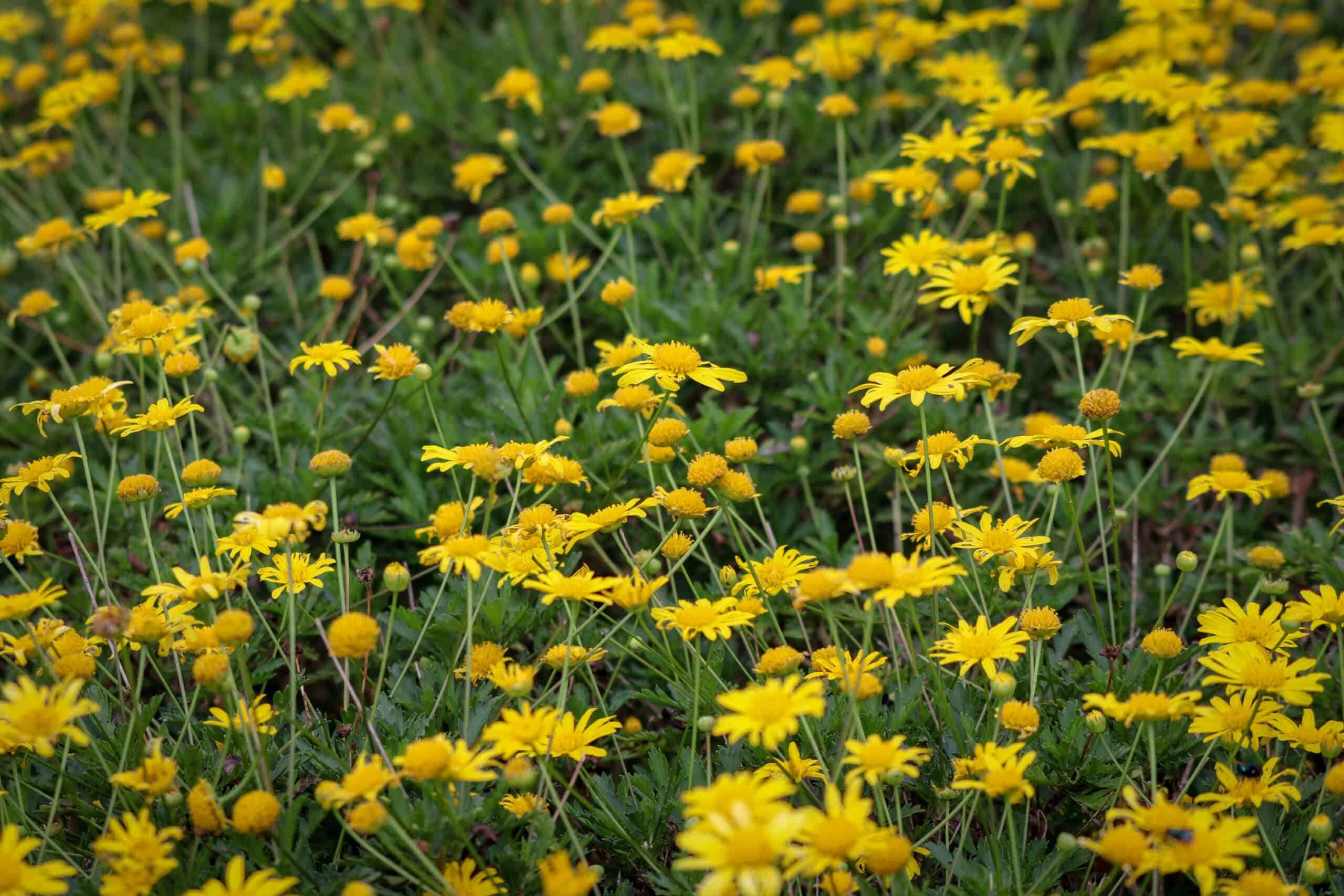
The Desert Marigold is a bright yellow wildflower that stands out in the arid landscape. It grows up to 2 feet tall, with delicate, daisy-like blooms. The petals have a soft, velvety texture, making them appear almost luminous in the sunlight. This resilient plant thrives in sandy or rocky soils, often found along desert roadsides. Its long blooming season extends from spring to early fall, providing consistent bursts of color.
California Poppy
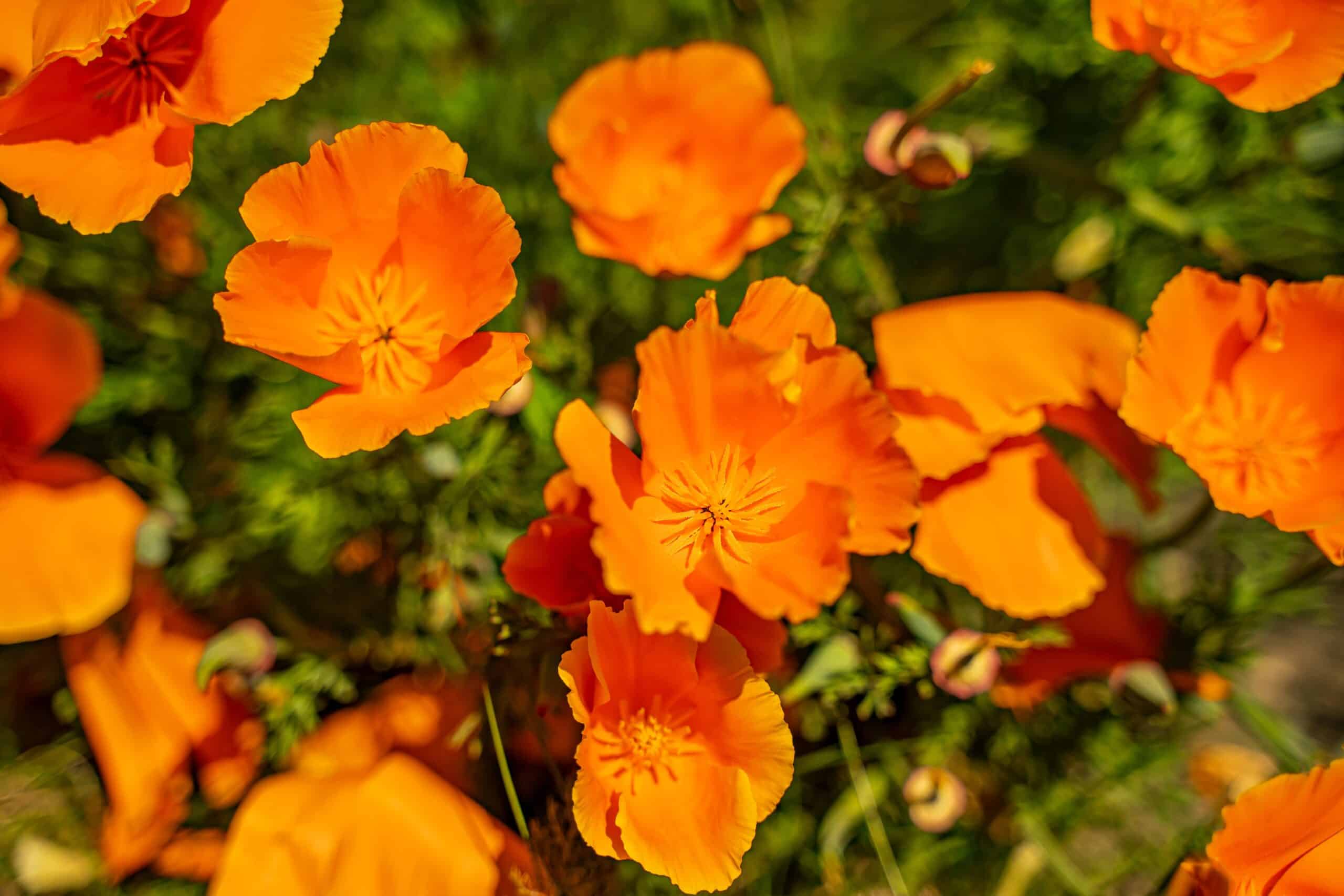
California Poppy is famous for its brilliant orange petals that open wide under the sun. The blooms are cup-shaped, creating a striking contrast against the sparse desert terrain. This flower grows low to the ground, typically reaching heights of 6 to 12 inches. It prefers sandy soils and is often seen covering large areas in vibrant carpets of orange. The delicate petals close at night and during overcast weather, conserving moisture.
Desert Sand Verbena
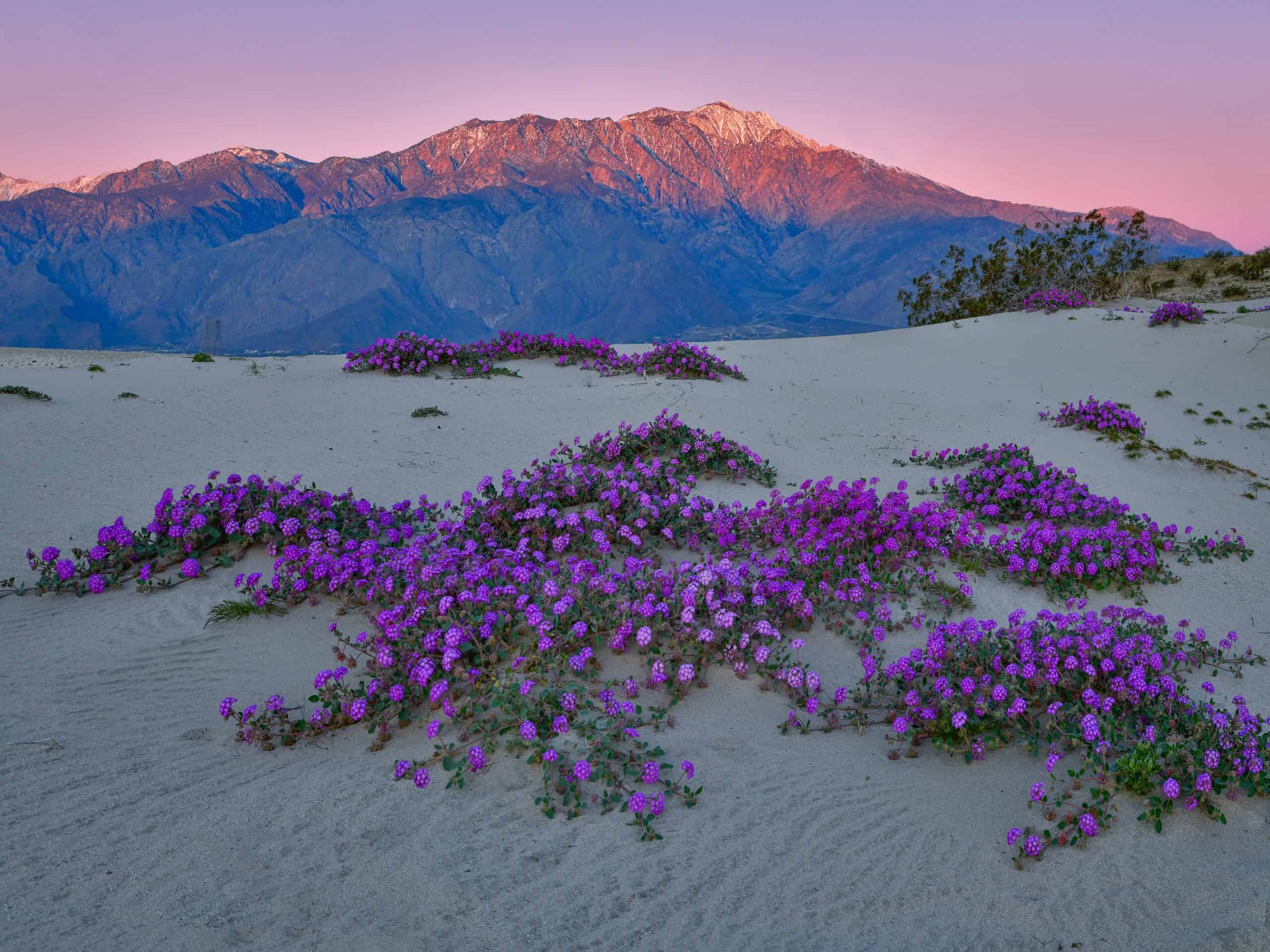
Desert Sand Verbena offers clusters of small, pink to lavender flowers that create a soft, pastel palette in the desert. These blossoms form dense, rounded heads, sitting atop slender stems. The plant is low-growing, spreading out like a mat across sandy soils. Its sweet fragrance attracts a variety of pollinators, including bees and butterflies. It blooms primarily in the spring, adding a gentle beauty to the harsh desert environment.
Desert Five-Spot
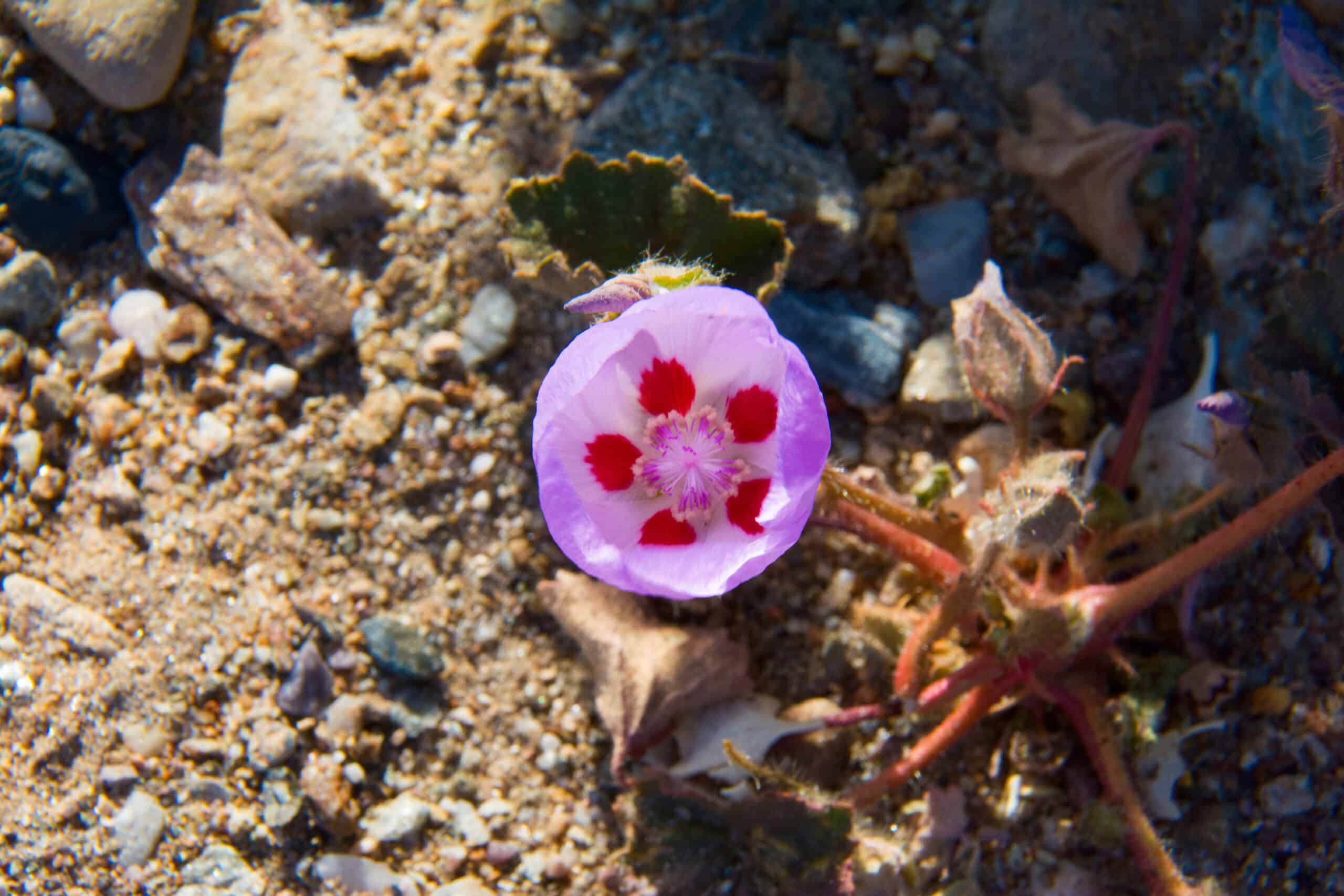
Desert Five-Spot is a unique wildflower with five pale pink petals, each adorned with a dark purple spot at the base. The flower forms a cup shape, with spots that give it a distinctive, eye-catching appearance. It grows to about 1 foot tall, favoring sandy washes and desert slopes. The blooms appear in late spring, often after a good rain, adding pops of color to the dry landscape. Its rarity makes it a treasured find among wildflower enthusiasts.
Mojave Aster
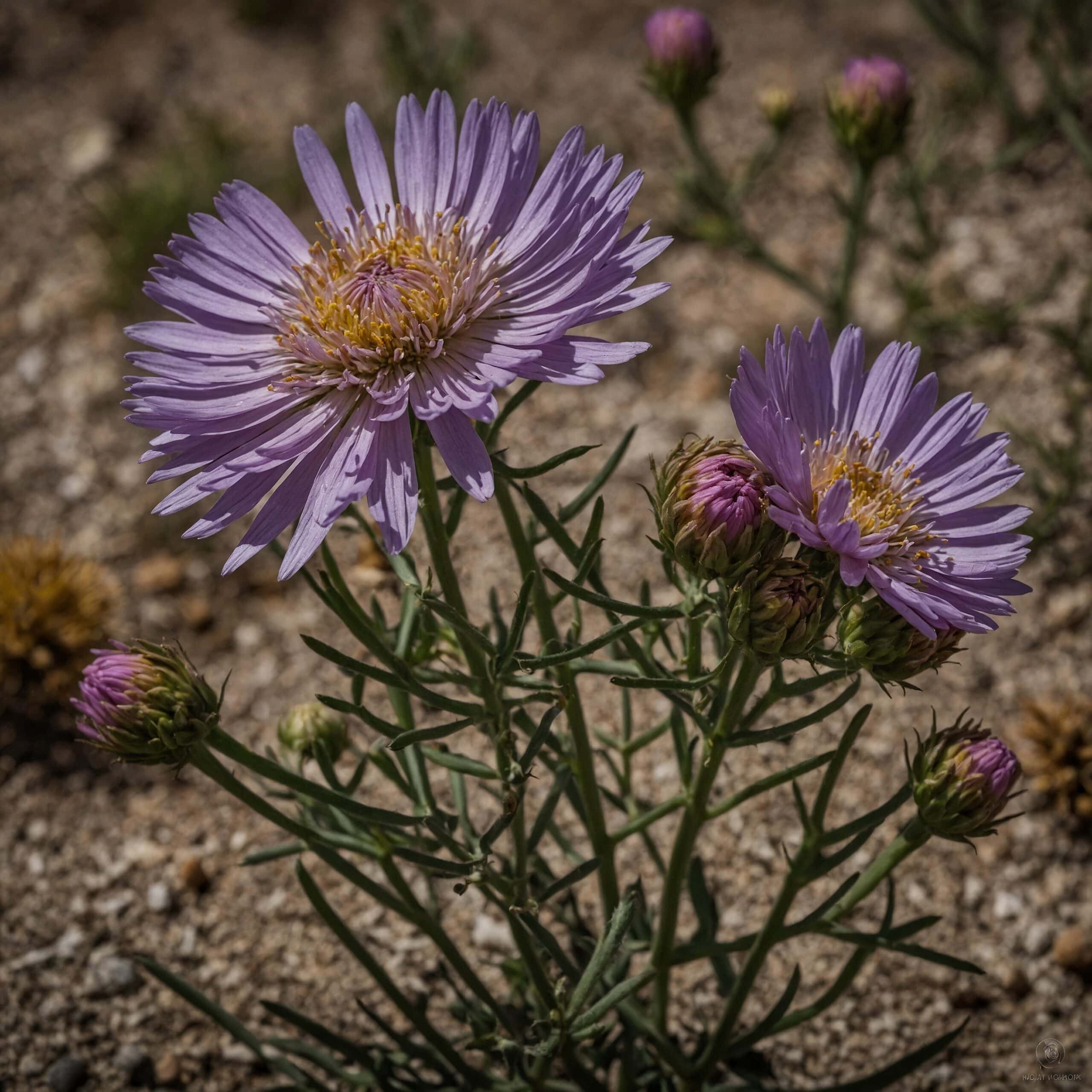
Mojave Aster displays delicate, lavender petals surrounding a bright yellow center. This wildflower grows on tall, slender stems that can reach up to 2 feet. The blooms have a soft, daisy-like appearance, fluttering gently in the desert breeze. It thrives in rocky or gravelly soils, often found in the Mojave Desert region. The plant blooms from early spring to late summer, adding a touch of elegance to the rugged terrain.
Arizona Lupine
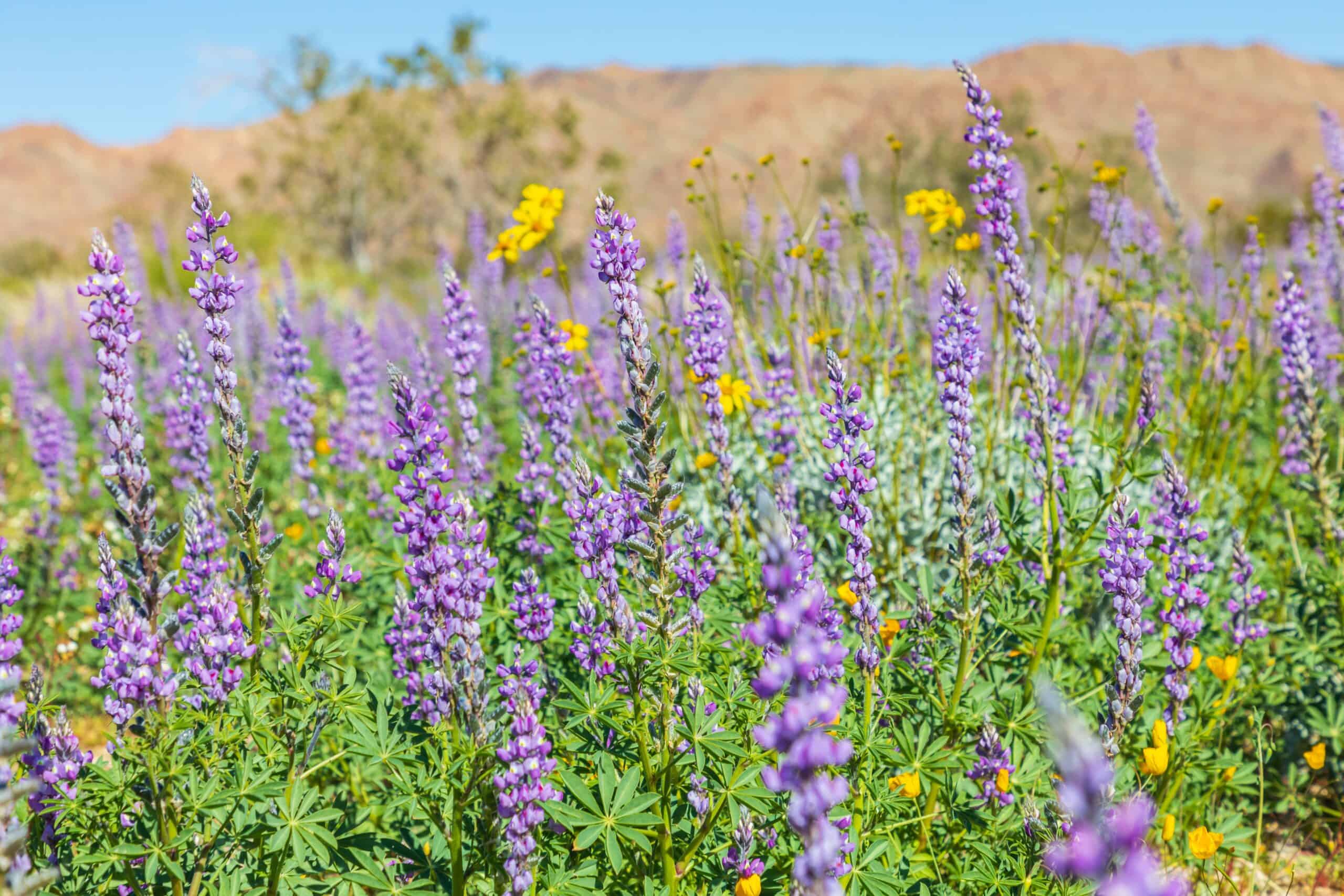
Arizona Lupine is a striking wildflower with tall spikes of purple and blue flowers. The blooms are densely packed along the stem, creating a vibrant column of color. Each flower has a distinct, pea-like shape, characteristic of the lupine family. The plant can grow up to 2 feet tall, often seen in sandy or gravelly areas. It blooms in the spring, turning the desert landscape into a sea of blue and purple hues.
Indian Paintbrush
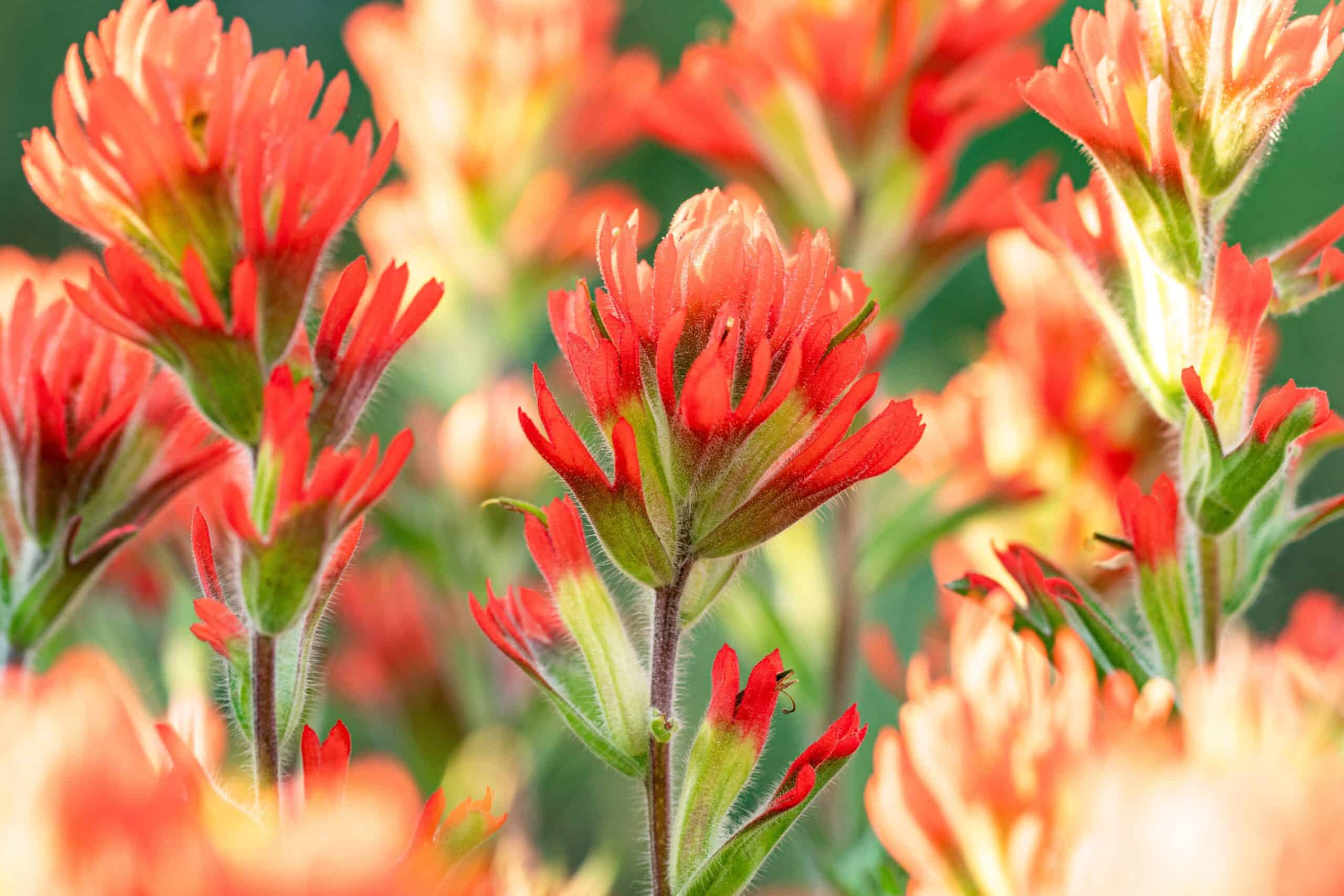
Indian Paintbrush stands out with its fiery red or orange flower spikes. The blooms are not true petals but bracts that surround the plant’s small, green flowers. This wildflower grows between 1 to 2 feet tall, often found in dry, open areas. Its bright colors resemble the strokes of a paintbrush, hence the name. It is a hemiparasitic plant, drawing nutrients from the roots of nearby plants, making it unique among desert wildflowers.
Brittlebush
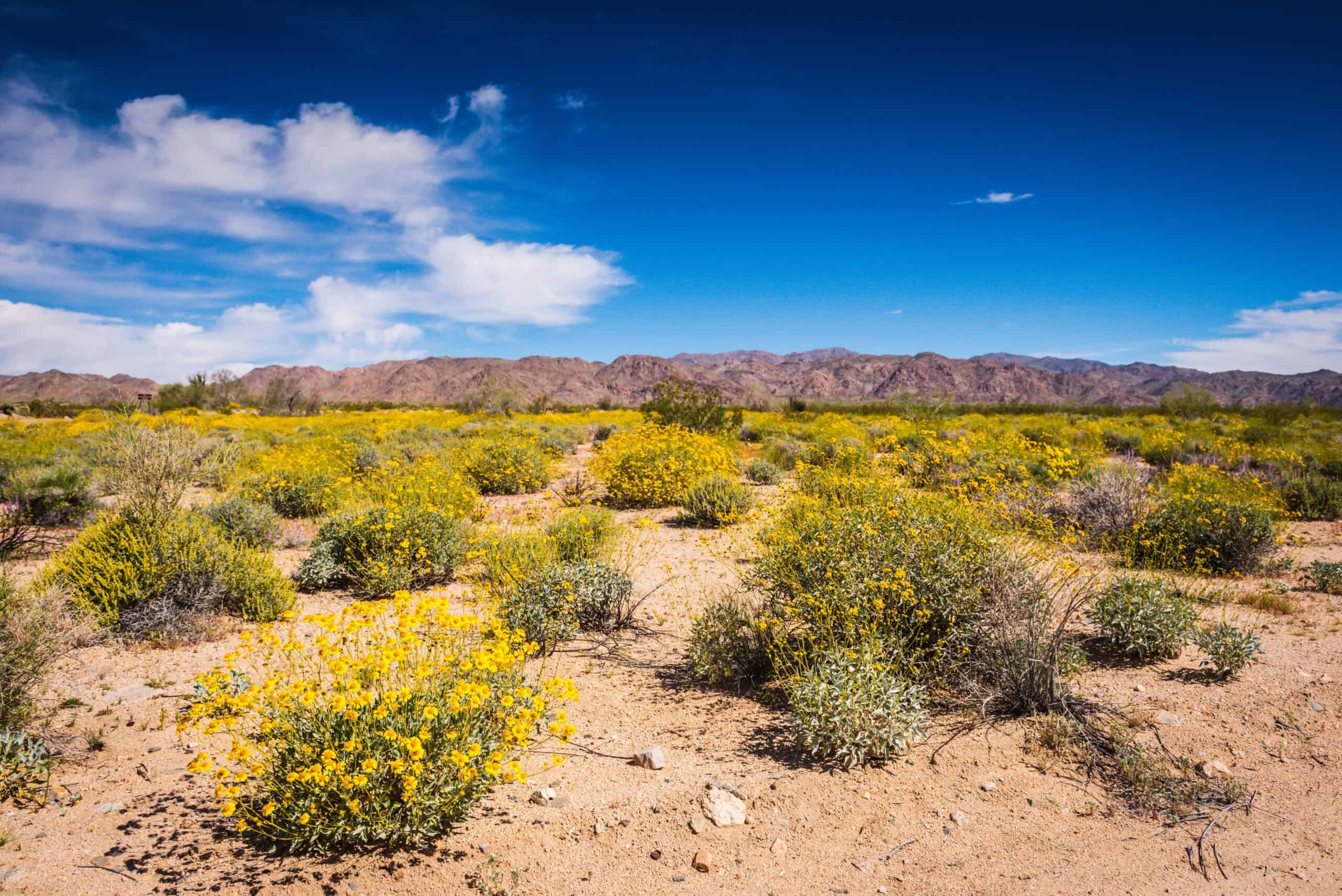
Brittlebush features clusters of small, yellow flowers perched on top of long, grayish-green stems. The plant forms a rounded, bushy shape, reaching up to 3 feet in height. Its name comes from the brittle nature of its stems, which can easily break. Brittlebush thrives in rocky and sandy soils, commonly found throughout the Sonoran Desert. It blooms profusely in the spring, covering the landscape in a sea of yellow blossoms.
Blazing Star
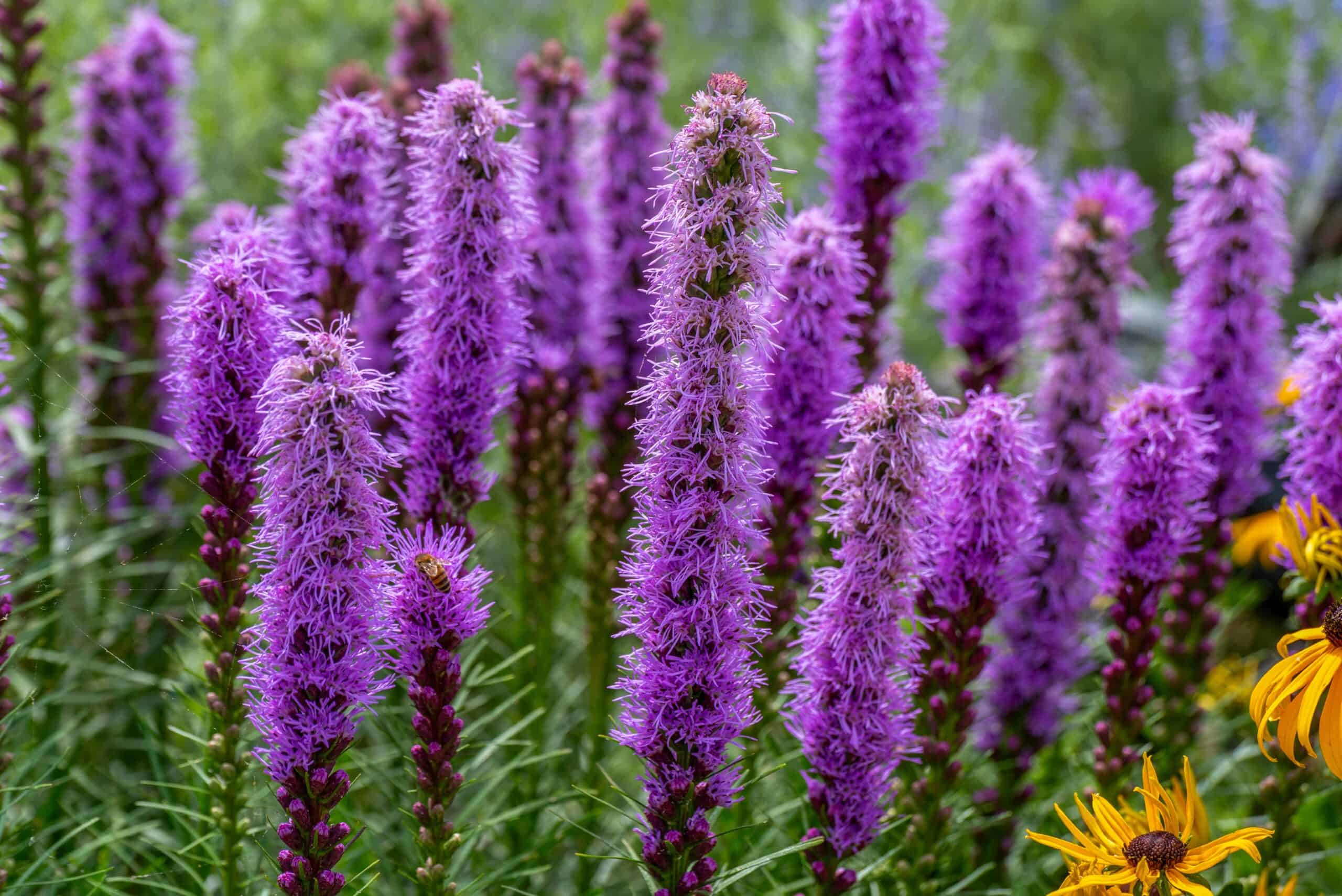
Blazing Star adds a burst of yellow to the desert with its tall, slender spikes of bright flowers. The blooms are densely packed, creating a striking visual display against the rugged terrain. This wildflower grows up to 3 feet tall, thriving in rocky or sandy soils. The plant’s thin, green leaves form a rosette at the base, while the flower stalk rises high above. It blooms in late spring, often after a good rain, illuminating the desert with its golden glow.
Evening Primrose
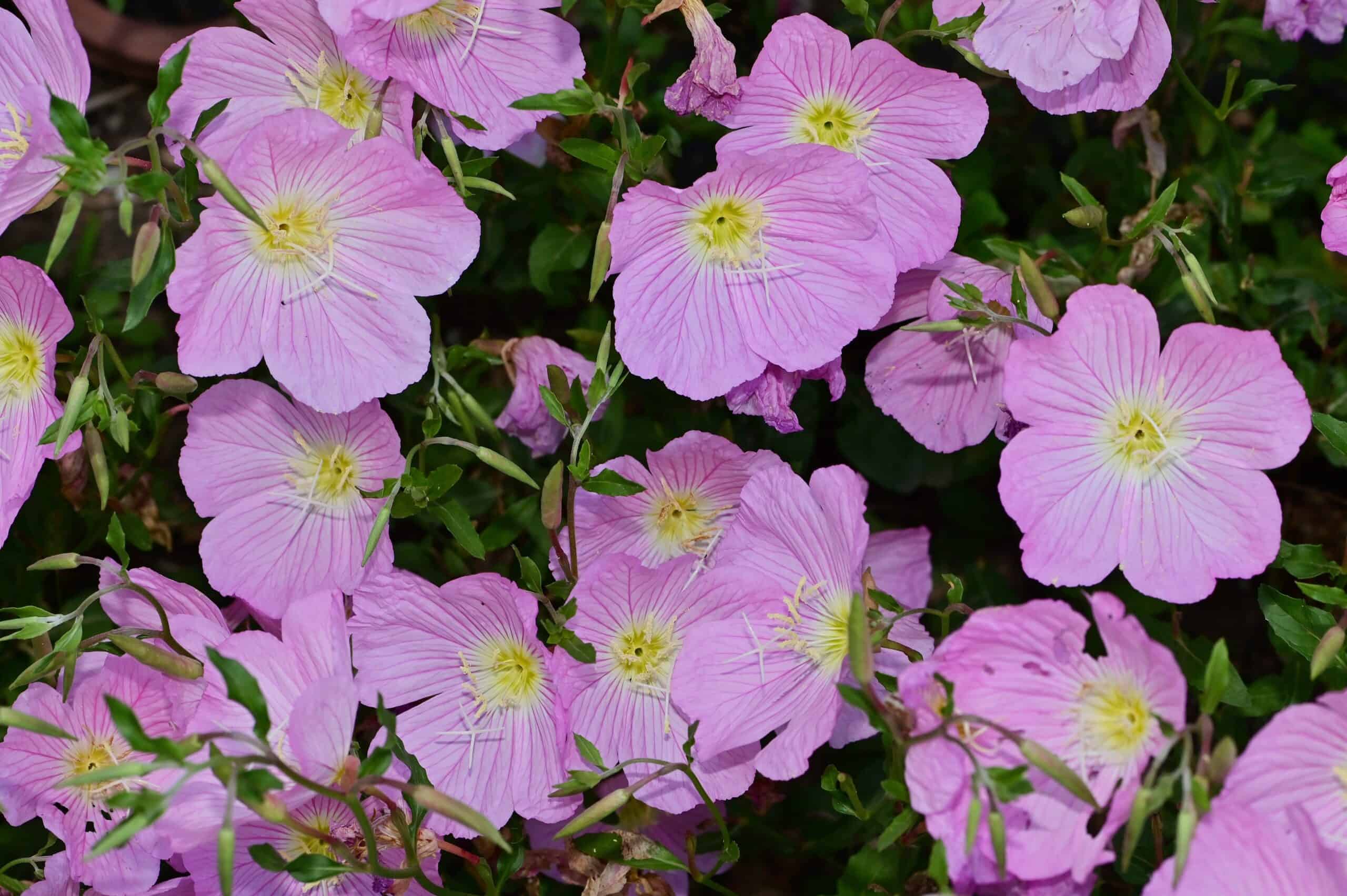
Evening Primrose is known for its delicate, pale yellow flowers that open in the evening. The blooms are cup-shaped, with four broad petals that create a soft, welcoming appearance. This wildflower grows low to the ground, typically reaching heights of 1 to 2 feet. It prefers sandy or gravelly soils, often found in desert washes and open flats. The plant’s flowers close by midday, conserving moisture in the harsh desert sun.
Globe Mallow
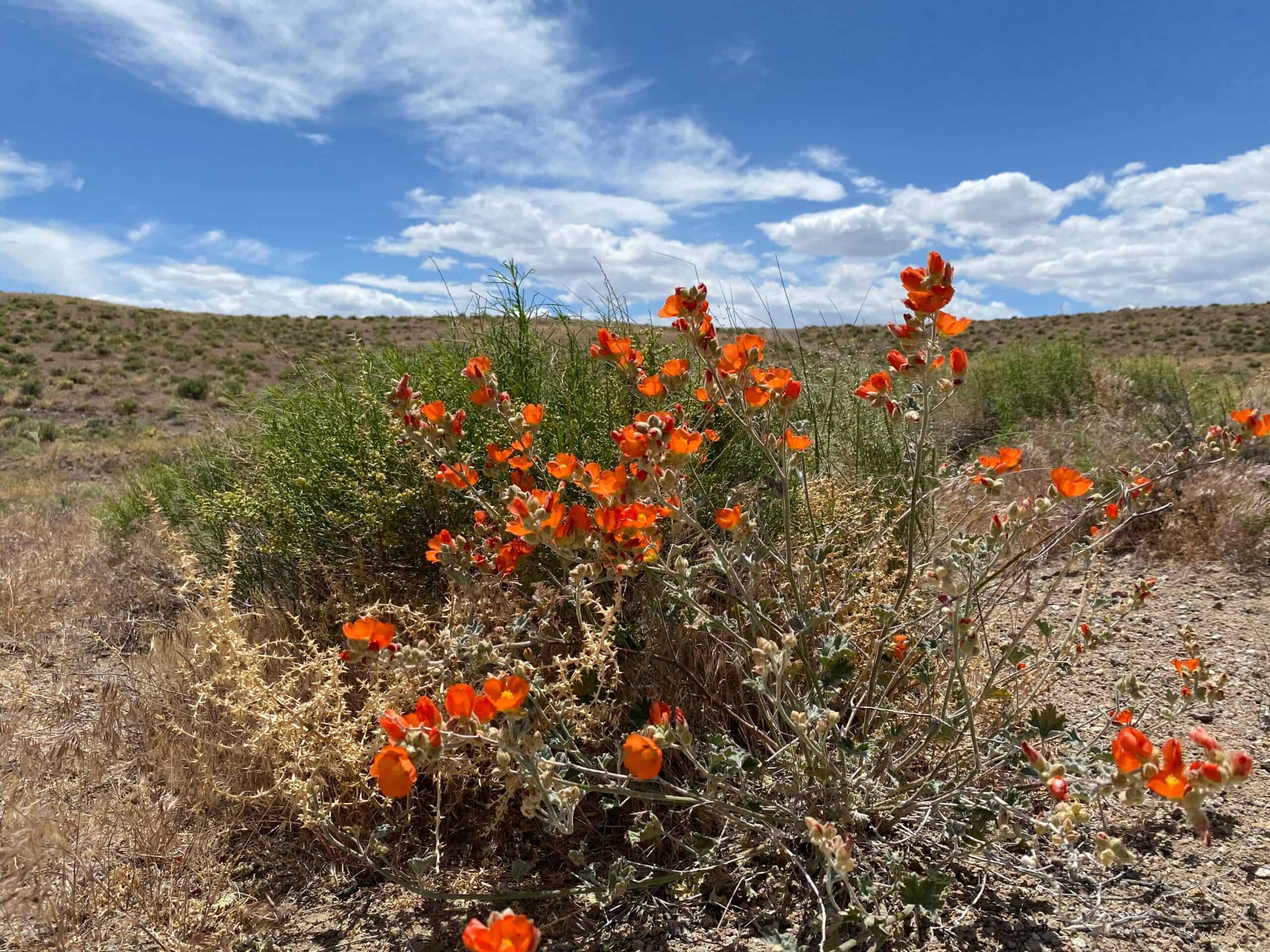
Globe Mallow stands out with its clusters of orange to coral-colored flowers that bloom profusely along slender stems. Each flower is cup-shaped, with five petals that create a delicate, papery texture. The plant grows up to 3 feet tall, with grayish-green, fuzzy leaves that add to its charm. It thrives in sandy and rocky soils, often seen along desert roadsides. Globe Mallow blooms throughout the spring, adding vibrant splashes of color to the arid landscape.
Parry’s Penstemon
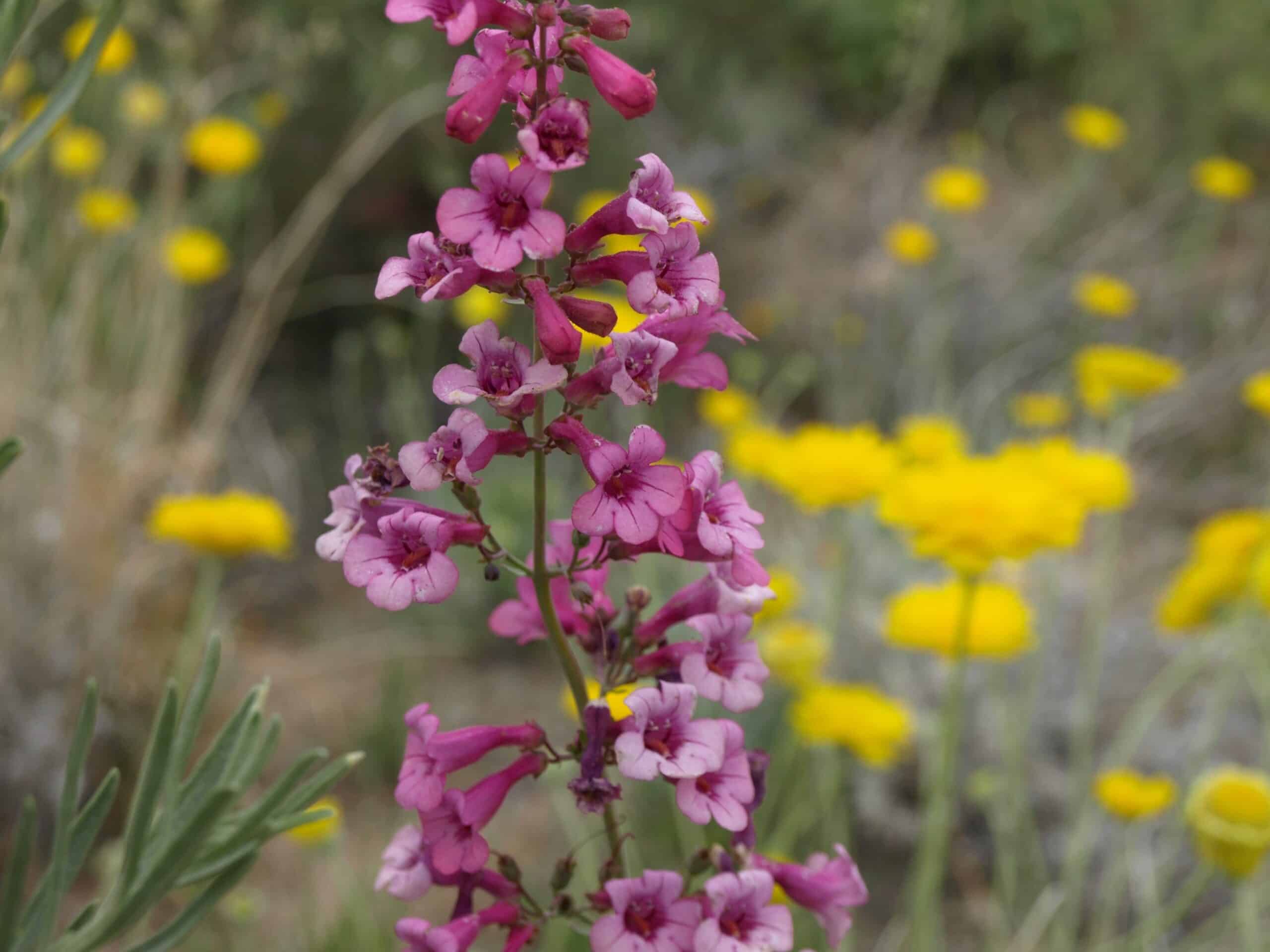
Parry’s Penstemon is a striking wildflower with tall spikes of tubular, bright red flowers. The blooms are densely packed, forming a vibrant display that attracts hummingbirds and bees. This plant grows up to 2 feet tall, with dark green, lance-shaped leaves that create a sharp contrast against the bright flowers. It thrives in well-drained, sandy soils, often found on desert slopes and hillsides. Parry’s Penstemon blooms in late spring, adding a dramatic touch of color to the desert.
Desert Lily
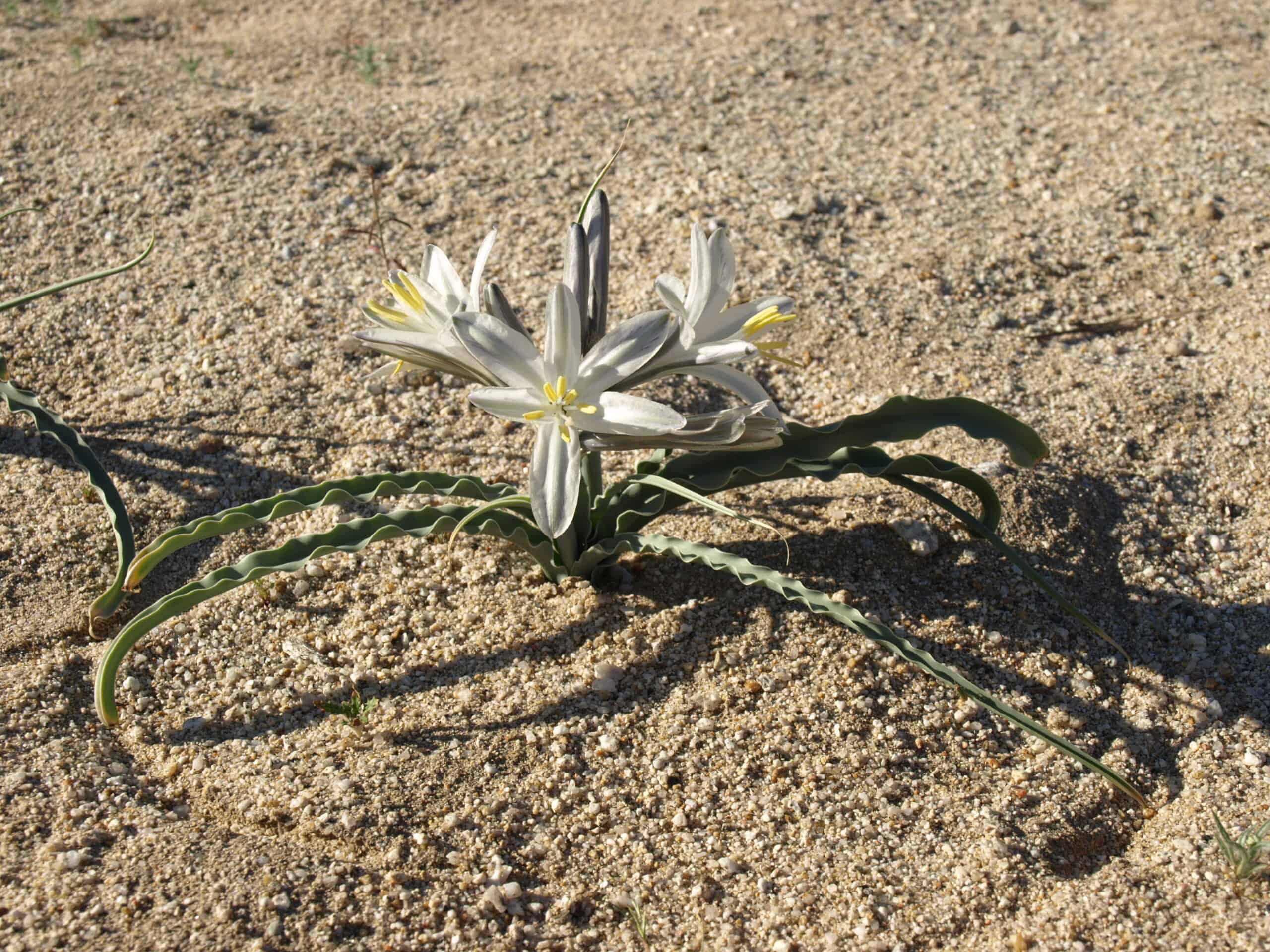
Desert Lily is a delicate and elegant wildflower with large, white, trumpet-shaped flowers. The blooms sit atop slender, green stems that can reach up to 3 feet in height. Each flower has six petals, creating a star-like appearance that stands out against the barren desert floor. The plant grows from a bulb, allowing it to survive long periods of drought. It blooms in early spring, often after a winter rain, adding a touch of grace to the desert.
Ocotillo
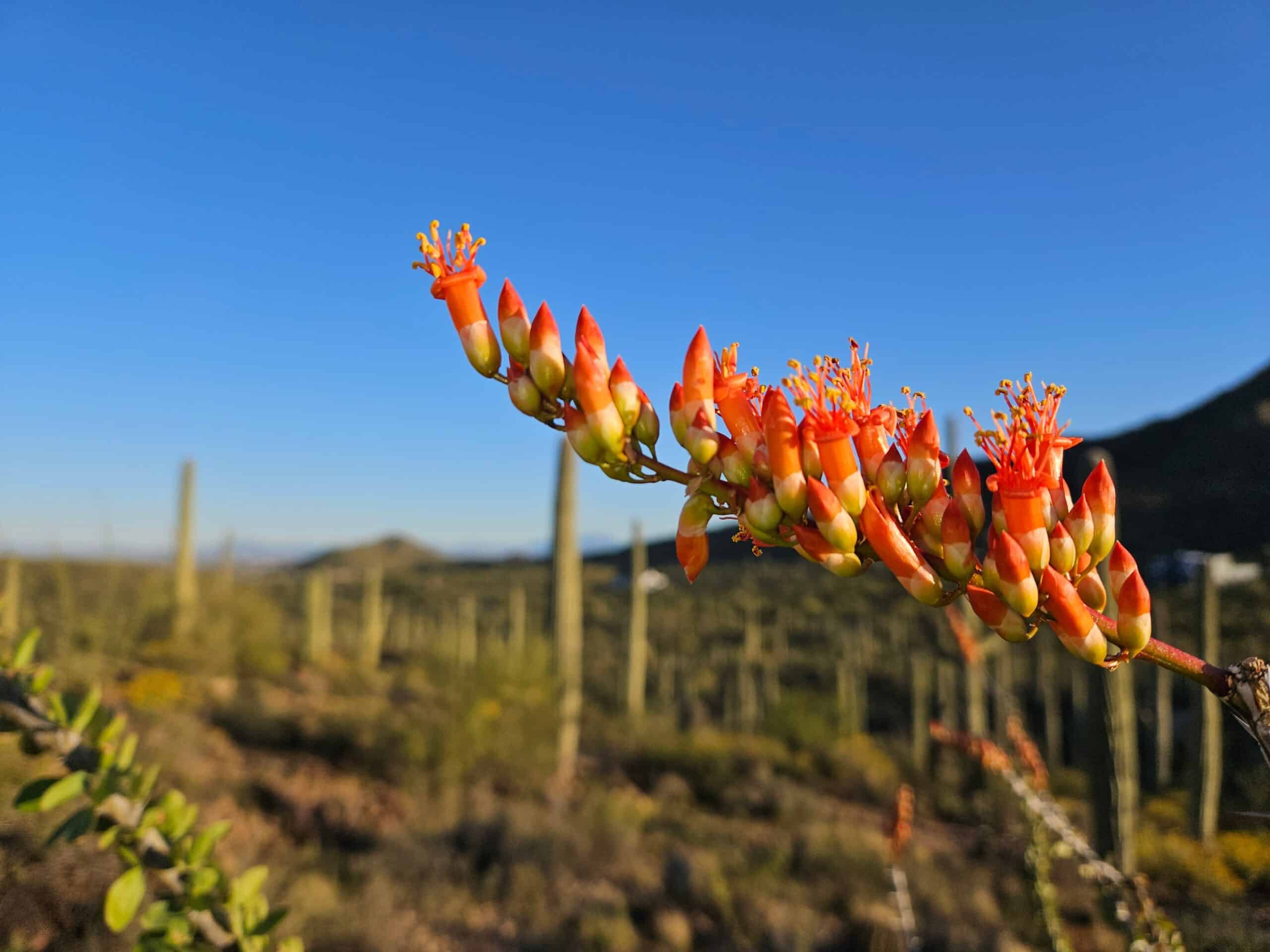
Ocotillo is a unique desert plant with long, spiny stems that produce clusters of bright red flowers. The blooms are tubular, growing in dense clusters at the tips of the stems, creating a striking contrast against the barren landscape. This plant can grow up to 20 feet tall, with stems that resemble spiny, green whips. It thrives in rocky and sandy soils, often found on desert slopes and plains. Ocotillo blooms in the spring, often following a rain, adding vibrant splashes of red to the desert.
Fairy Duster
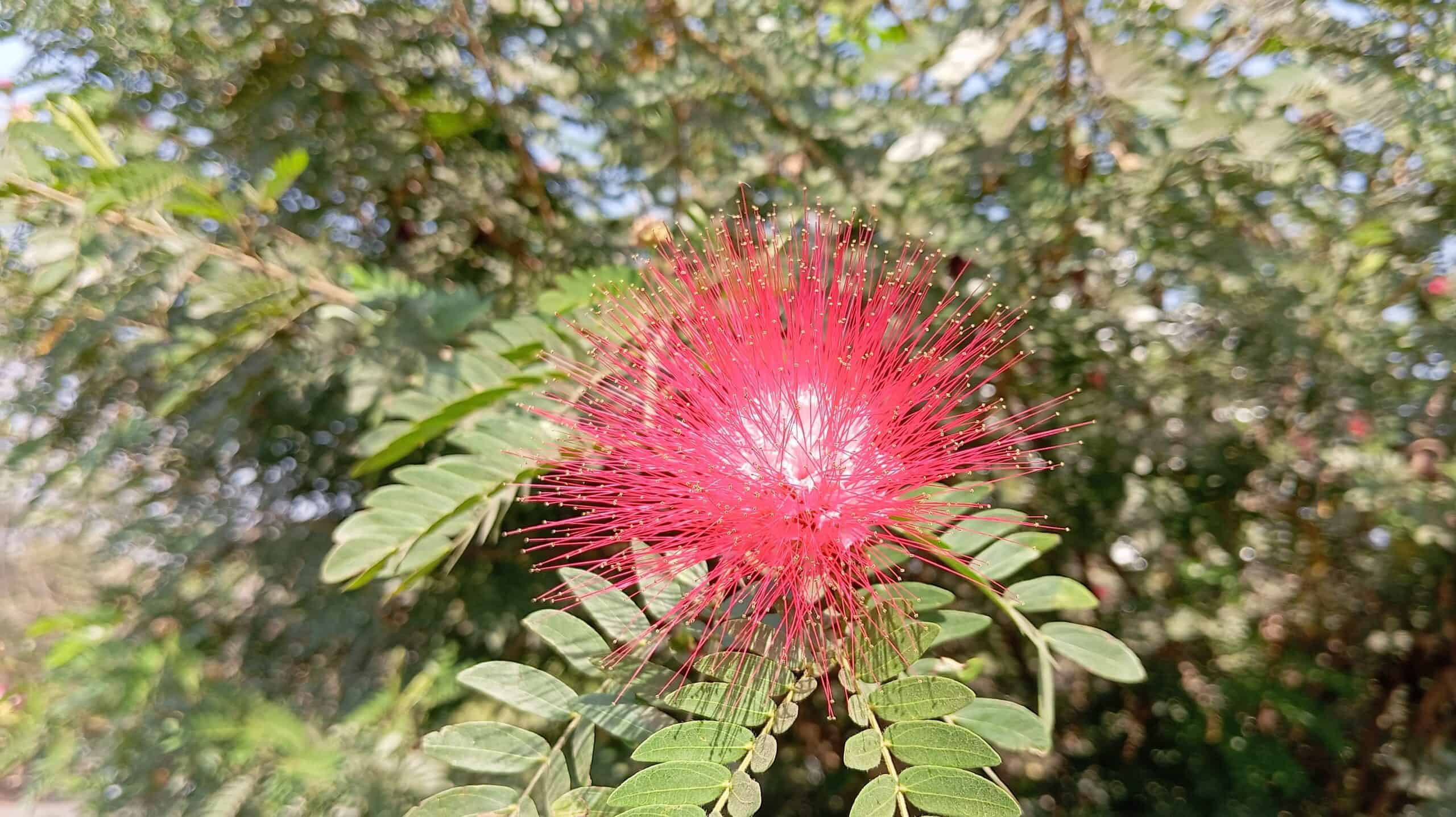
Fairy Duster is a whimsical wildflower with feathery, pink to red blooms that resemble delicate powder puffs. The flowers grow in clusters, creating a soft, airy appearance that contrasts with the plant’s small, green leaves. This low-growing shrub typically reaches heights of 2 to 3 feet, spreading out across the desert floor. It thrives in sandy or gravelly soils, often found in desert washes and open flats. Fairy Duster blooms in the spring, adding a playful touch of color to the arid landscape.
Desert Chicory
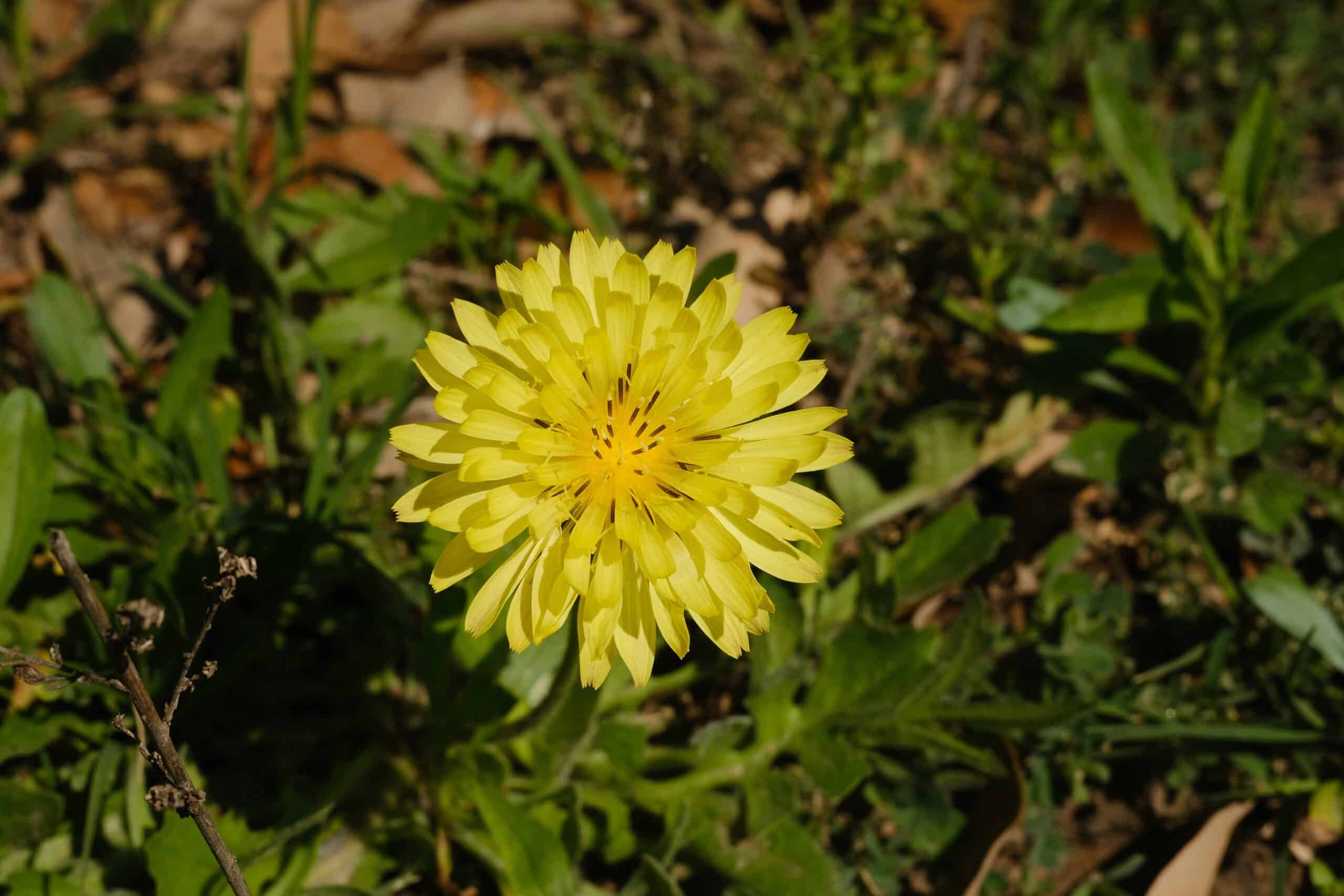
Desert Chicory is a charming wildflower with pale white to lavender blooms that open in the morning sun. The flowers are daisy-like, with multiple narrow petals that create a delicate, star-shaped appearance. This plant grows up to 2 feet tall, with slender, green stems and deeply lobed leaves. It thrives in sandy or rocky soils, often found along desert roadsides and washes. Desert Chicory blooms in early spring, adding a soft, subtle beauty to the harsh desert environment.
This article originally appeared on Rarest.org.
More from Rarest.org
1973 Roosevelt Dime Value Guide
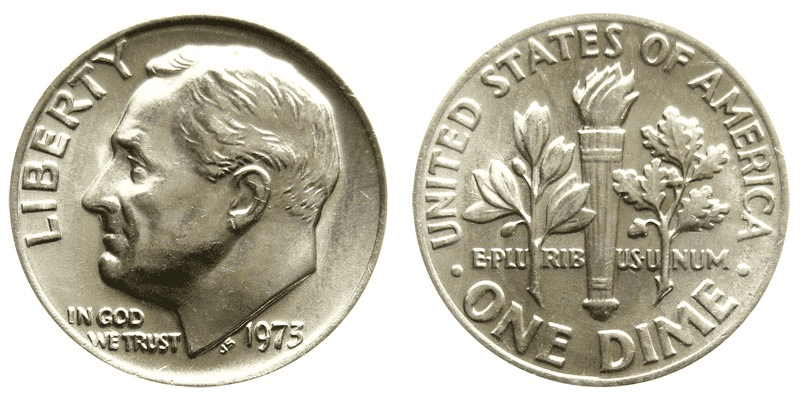
The 1973 dime is a 10-cent coin issued by the US government through its mint centers in 1973. The coin is made of base metals and is over 50 years old. Read More.
1970 Lincoln Penny Value Guide
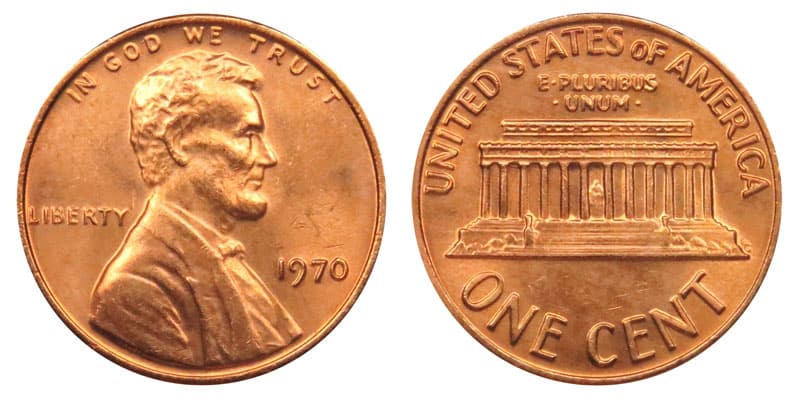
One of the greatest appeals of coins and coin collecting is the fact that coins can represent a snapshot of the historical events that happened in the year the coin was minted. Read More.
20 Most Endangered Mammals in the Wild
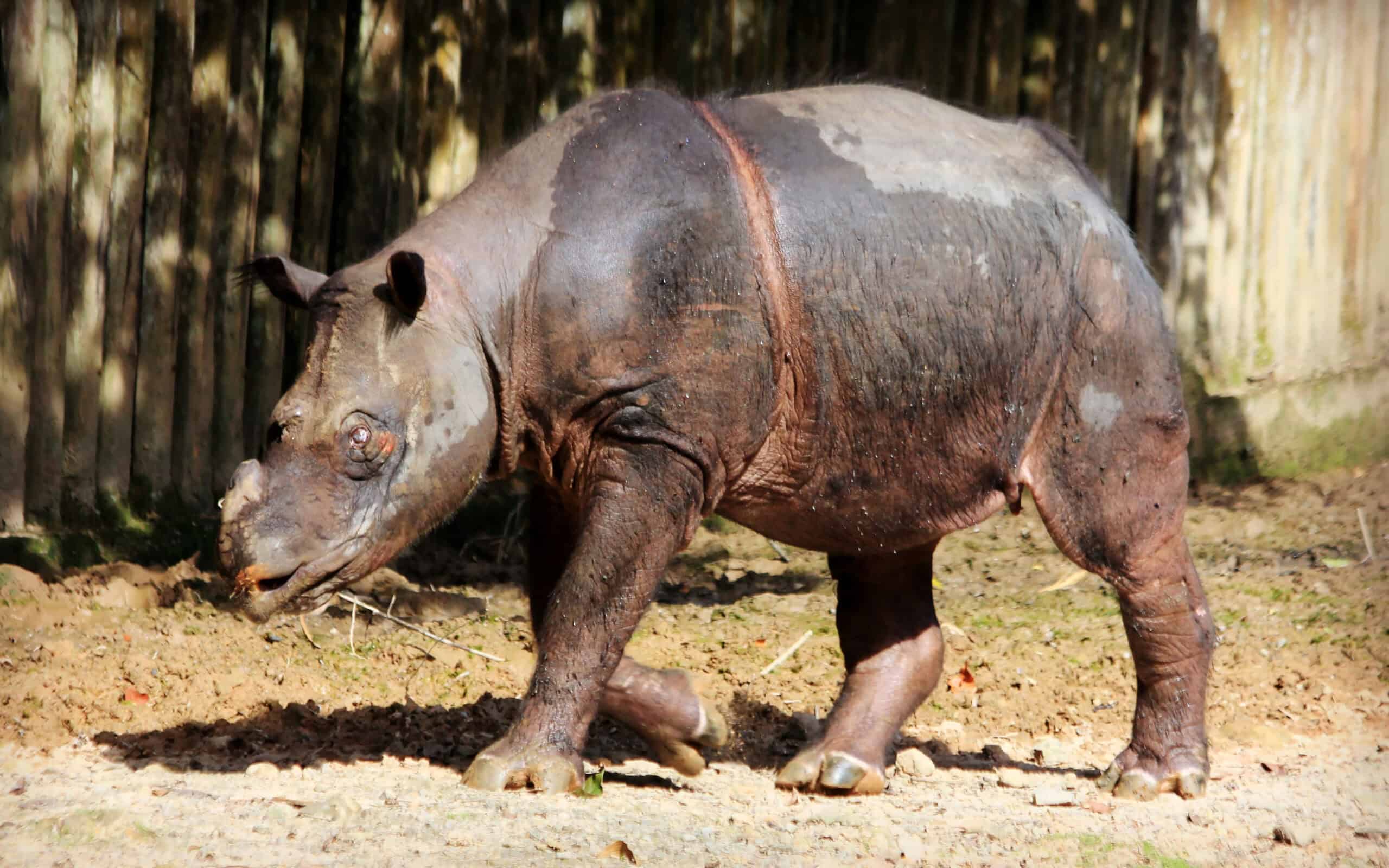
The natural world is home to countless remarkable mammals, many of which are facing the threat of extinction. Read More.
